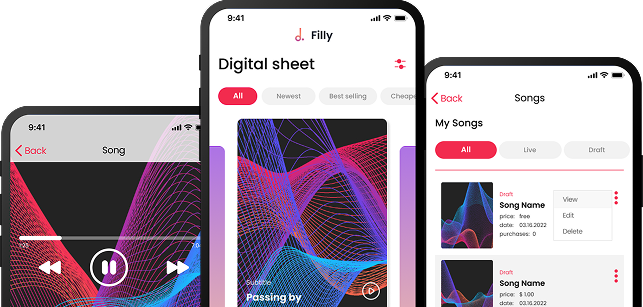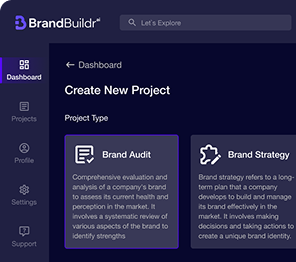In today’s highly competitive digital landscape, having a functional product is no longer enough. Whether it’s a website, mobile app, or any kind of software, the user experience (UX) plays a critical role in determining its success. This is where usability testing comes in — a process that evaluates how easy and intuitive a product is for real users.
Usability testing is not just about finding bugs or errors; it’s about ensuring that your product is user-friendly, intuitive, and efficient. In this comprehensive guide, we’ll explore what usability testing is, why it’s important, the various types of usability testing, and how to conduct it effectively.

What Is Usability Testing?
Usability testing is a technique used in user-centered design to evaluate a product by testing it with real users. The goal is to observe how participants interact with the product to identify usability problems, collect qualitative and quantitative data, and determine the product's level of ease of use.
During a usability test, participants are typically asked to complete a set of tasks while observers watch, listen, and take notes. These tasks are designed to reflect real-world scenarios that users are likely to encounter. The goal is not to test users, but to test the product and understand how easy it is to use for the target audience.
Key Aspects of Usability Testing
- Effectiveness: Can users complete tasks successfully?
- Efficiency: How much time and effort do users need to complete tasks?
- Satisfaction: How do users feel about their experience with the product?
- Learnability: How easy is it for users to perform tasks for the first time?
- Error Frequency: How often do users make mistakes, and how easily can they recover?
Why Is Usability Testing Important?
1. Enhances User Experience
The primary goal of usability testing is to improve user experience. No matter how innovative or technically advanced your product is, if users find it difficult to navigate, it won’t succeed in the market. Usability testing helps ensure that users can easily understand and interact with your product, leading to higher satisfaction and engagement.
2. Reduces Development Costs
Finding and fixing usability issues during the design phase is significantly more cost-effective than doing so after launch. If your product goes to market with usability flaws, it can result in costly redesigns, lost revenue, and potential damage to your brand reputation. Usability testing identifies issues early on, allowing you to fix them before they become costly problems.
3. Increases Conversion Rates
Whether you're developing an e-commerce website, a SaaS platform, or a mobile app, the ease with which users can complete their desired actions has a direct impact on conversion rates. If usability issues are preventing users from purchasing, subscribing, or completing other key actions, you’re losing potential customers. Usability testing ensures your product is optimized to guide users smoothly toward conversion.
4. Builds Customer Loyalty
When users have a positive experience with a product, they are more likely to become loyal customers. A user-friendly product fosters trust and satisfaction, which encourages users to return and recommend it to others. Usability testing helps ensure that your product consistently delivers a positive experience, helping build long-term customer loyalty.
5. Validates Design Choices
Usability testing validates whether your design choices are effective. Designers often have assumptions about how users will interact with a product, but without testing those assumptions, they could be leading the design in the wrong direction. Usability testing provides real-world insights, helping teams make informed decisions based on actual user behavior.

Types of Usability Testing
There are several types of usability testing, each suited to different stages of the product development process and different research goals. Below are some common types:
1. Moderated vs. Unmoderated Usability Testing
- Moderated Usability Testing: A facilitator (moderator) guides participants through the testing process, asking questions and providing clarification when necessary. This is often conducted in a lab or remotely via video conferencing.
- Unmoderated Usability Testing: Participants complete tasks independently, without a moderator. This type of testing is often conducted remotely, using software that records the user's interactions. Unmoderated testing is more scalable and cost-effective, but lacks the ability to probe deeper into user behavior.
2. Remote vs. In-Person Usability Testing
- Remote Usability Testing: Participants complete tasks on their own devices from their own locations. Remote testing tools capture screen activity, clicks, and sometimes even facial expressions and voice responses. This approach allows for a wider range of participants and is more cost-effective than in-person testing.
- In-Person Usability Testing: In-person testing involves direct observation, where participants come to a physical location, and facilitators can observe them in real time. This method offers more control and allows for deeper interaction between the moderator and participants.
3. Explorative vs. Comparative Usability Testing
- Explorative Testing: Conducted in the early stages of product development, explorative testing is used to explore different design concepts and understand user needs. It helps teams generate insights on user preferences before finalizing design decisions.
- Comparative Testing: This method compares two or more design options to determine which one performs better. Participants are asked to complete the same tasks on different versions of a product, and their interactions are compared to identify the best solution.
4. Formative vs. Summative Usability Testing
- Formative Usability Testing: This type of testing is performed during the early stages of design, aiming to inform and shape the product. It identifies usability problems and suggests improvements.
- Summative Usability Testing: Conducted later in the development cycle, summative testing assesses the usability of a finished product or near-final prototype. It evaluates how well the product performs and whether it meets established usability benchmarks.


How to Conduct Usability Testing
Here’s a step-by-step guide to conducting effective usability testing:
Step 1: Define Goals and Objectives
Before starting usability testing, it’s crucial to define clear goals and objectives. What do you want to learn from the test? Are you focusing on navigation, task completion, or user satisfaction? Having specific goals will help shape your test scenarios and ensure the testing aligns with your product’s needs.
Step 2: Create Test Scenarios and Tasks
Once the goals are set, create realistic scenarios that represent common user tasks. These should be based on how users will interact with the product in the real world. For example, if you're testing an e-commerce website, a task might be: "Find and purchase a pair of shoes in your size." Tasks should be clear, relevant, and designed to gather specific insights.
Step 3: Recruit Participants
Recruit participants who match your target audience. Ensure diversity in your selection to capture a wide range of user experiences. Depending on the type of usability test, you can use in-person recruiting methods, online recruitment platforms, or remote testing software to find participants.
Step 4: Conduct the Test
During the test, observe participants as they complete the assigned tasks. If you're conducting a moderated test, ask open-ended questions and encourage participants to think aloud, explaining their thought process. For unmoderated tests, ensure that participants understand the tasks and that recording tools are functioning properly.
Step 5: Analyze Results
After the test, review the data collected, whether it’s quantitative (e.g., task success rates, time on task) or qualitative (e.g., user feedback, observed frustrations). Look for patterns in user behavior, such as common pain points, areas where users hesitate, or tasks that consistently cause problems. Document these findings for further analysis.
Step 6: Make Improvements
Based on the insights from your usability test, prioritize the most critical issues that need to be addressed. Work with your design and development teams to make the necessary improvements to your product. Consider running additional usability tests after making changes to ensure the issues have been resolved.
Common Usability Testing Mistakes to Avoid
While usability testing is essential, it’s easy to make mistakes that can undermine the effectiveness of the process. Here are some common pitfalls to avoid:
- Testing the Wrong Audience: Ensure participants are representative of your target audience. Testing with users who aren’t your ideal customers can lead to misleading results.
- Leading Participants: Moderators should avoid leading questions or hints that could influence the participant’s behavior. Let users struggle or succeed on their own, as this provides the most genuine feedback.
- Focusing Too Much on Aesthetics: While design is important, usability testing should focus on how well users can complete tasks and achieve their goals, rather than just the visual aspects of the product.
- Skipping Follow-Up Testing: Usability testing should be an iterative process. Don’t assume that fixing a single issue will solve all problems—continue to test and refine your product until the UX is seamless.

The Future of Usability Testing: AI and Automation
As technology evolves, so does usability testing. The future of usability testing lies in AI and automation, which can streamline the process, provide real-time insights, and reduce the time it takes to gather feedback. Tools that leverage machine learning and natural language processing can automatically detect usability issues, analyze user behavior, and provide actionable recommendations for improvement.
In addition, remote usability testing will continue to grow in popularity, allowing teams to test with diverse user bases from around the world without the need for physical labs or in-person sessions.
Conclusion
Usability testing is a critical component of creating user-friendly, efficient, and successful products. By putting your product in the hands of real users, you gain invaluable insights into how it performs in the real world and where improvements are needed. Whether you're building a website, mobile app, or software platform, usability testing ensures that your product not only works but works well for the people using it.
Incorporating usability testing throughout your product development process will lead to more satisfied users, lower development costs, and ultimately, a better product that stands out in today’s competitive market.
Heading 1
Heading 2
Heading 3
Heading 4
Heading 5
Heading 6
Lorem ipsum dolor sit amet, consectetur adipiscing elit, sed do eiusmod tempor incididunt ut labore et dolore magna aliqua. Ut enim ad minim veniam, quis nostrud exercitation ullamco laboris nisi ut aliquip ex ea commodo consequat. Duis aute irure dolor in reprehenderit in voluptate velit esse cillum dolore eu fugiat nulla pariatur.
Block quote
Ordered list
- Item 1
- Item 2
- Item 3
Unordered list
- Item A
- Item B
- Item C
Bold text
Emphasis
Superscript
Subscript





















.avif)



.avif)

.avif)


